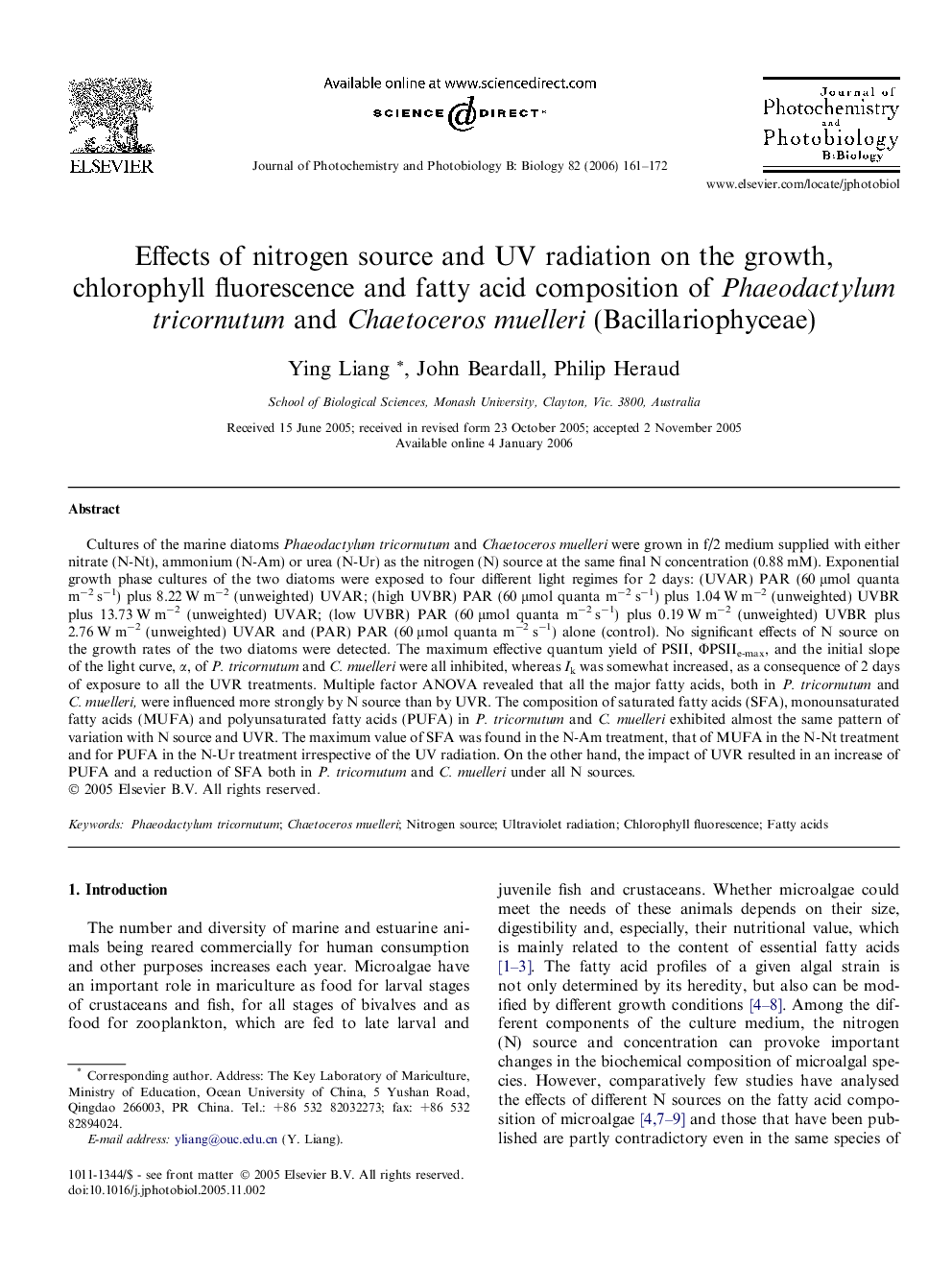| Article ID | Journal | Published Year | Pages | File Type |
|---|---|---|---|---|
| 30872 | Journal of Photochemistry and Photobiology B: Biology | 2006 | 12 Pages |
Cultures of the marine diatoms Phaeodactylum tricornutum and Chaetoceros muelleri were grown in f/2 medium supplied with either nitrate (N-Nt), ammonium (N-Am) or urea (N-Ur) as the nitrogen (N) source at the same final N concentration (0.88 mM). Exponential growth phase cultures of the two diatoms were exposed to four different light regimes for 2 days: (UVAR) PAR (60 μmol quanta m−2 s−1) plus 8.22 W m−2 (unweighted) UVAR; (high UVBR) PAR (60 μmol quanta m−2 s−1) plus 1.04 W m−2 (unweighted) UVBR plus 13.73 W m−2 (unweighted) UVAR; (low UVBR) PAR (60 μmol quanta m−2 s−1) plus 0.19 W m−2 (unweighted) UVBR plus 2.76 W m−2 (unweighted) UVAR and (PAR) PAR (60 μmol quanta m−2 s−1) alone (control). No significant effects of N source on the growth rates of the two diatoms were detected. The maximum effective quantum yield of PSII, ΦPSIIe-max, and the initial slope of the light curve, α, of P. tricornutum and C. muelleri were all inhibited, whereas Ik was somewhat increased, as a consequence of 2 days of exposure to all the UVR treatments. Multiple factor ANOVA revealed that all the major fatty acids, both in P. tricornutum and C. muelleri, were influenced more strongly by N source than by UVR. The composition of saturated fatty acids (SFA), monounsaturated fatty acids (MUFA) and polyunsaturated fatty acids (PUFA) in P. tricornutum and C. muelleri exhibited almost the same pattern of variation with N source and UVR. The maximum value of SFA was found in the N-Am treatment, that of MUFA in the N-Nt treatment and for PUFA in the N-Ur treatment irrespective of the UV radiation. On the other hand, the impact of UVR resulted in an increase of PUFA and a reduction of SFA both in P. tricornutum and C. muelleri under all N sources.
